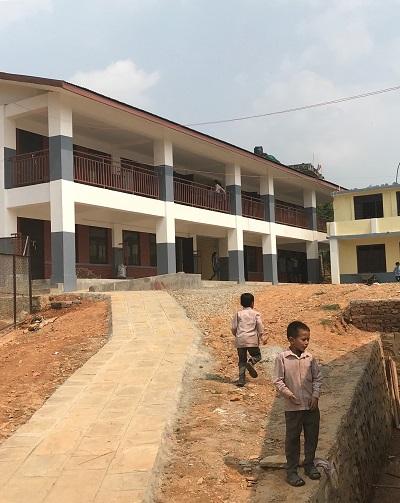
A reconstructed school which lost ten classrooms during Nepal's 2015 earthquake
By Denis McClean
KATHMANDU, 30 April, 2019 - Four years after an earthquake that could have killed thousands of schoolchildren ,a concerted effort is underway to ensure that every school in Nepal has introduced a basic earthquake safety programme.
The so-called Gorkha earthquake claimed 9,000 lives and destroyed 50,000 classrooms but, by a stroke of good fortune, it occurred on April 25, 2015 at noon on a Saturday, the only day of the week when there is no school.
There is a need “to mainstream school safety and disaster risk reduction in the education sector,” according to the School Sector Development Plan published in 2016 by the Ministry of Education.
Nepal was probably the first low-income country to promulgate a safe schools programme and did so under the leadership of Amod Dixit, the Secretary-General and founder of the National Society for Earthquake Technology-Nepal (NSET).
It started out modestly in 1991 with support from USAID, retrofitting an average of three schools per year, a frustratingly slow pace for Mr. Dixit. Years of unproductive lobbying meant that by the time of the earthquake, just 350 to 400 public and private schools had been retrofitted out of a countrywide total of 35,000 and they survived the earthquake to be used as temporary shelters for the displaced..
A major plank of the National Reconstruction Authority's (NRA) programme to build back better is a target of 7,553 schools to be re-built or retrofitted and 56% of the work has been completed and 29% is ongoing.
The Shree Shankheshwor Mahalxmi Secondary School in Kavre district lost ten classrooms in the 7.8 earthquake which claimed many lives in the locality including that of one student.
School Principal, Mr. Bahadur Tamang, said he did not think any of the children would have been killed as the classrooms were not completely flattened but he fears there would have been many injuries.
He is proud of the quality of the reconstruction work carried out on the school with the support of the Asian Development Bank (ADB) and looks forward to the addition of four more classrooms to ease overcrowding.